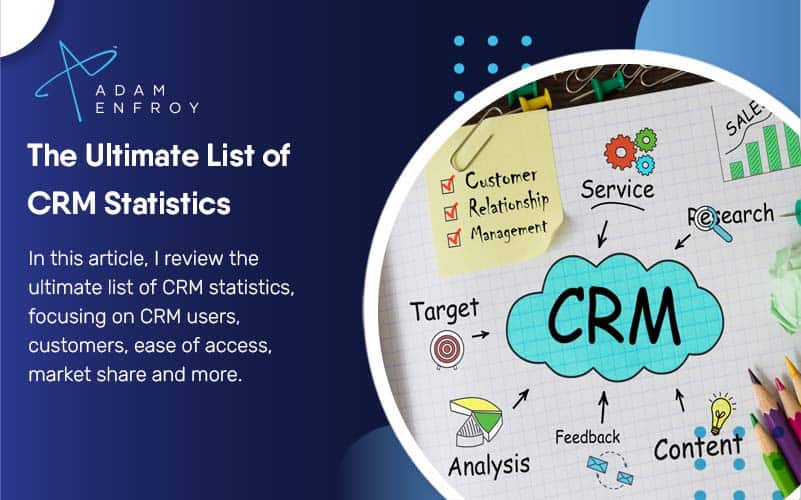Blogging for Beginners (Tips & Tricks in 2024)

Do you know what really gets me?
People that think that the only use of a blog is to share stuff about their day or to write a diary entry.
I mean, there’s nothing wrong with that if you simply want to share your thoughts online – but if you want to have an online business, it’s definitely not the way to go.
The key is to focus on offering value to a target market and, most importantly, start thinking about your blog like a business owner.
This will open up a world of possibilities for you, allowing you to not only inform and entertain but also monetize your blog in various ways.
Interested in learning more?
In this post, I’ll share with you some of the best tips and tricks for blogging so that you can hit the ground running and start seeing success with your blog sooner rather than later.
Creating A Blog On WordPress vs Site Builders
Before I share the step-by-step beginner’s guide that shows you how to create a blog on WordPress, here’s a quick note on the difference between WordPress.com and WordPress.org.
WordPress.com allows you to set up a free blog, hosted on its platform.
It’s a great option if you want to start a blog and don’t want to invest any money.
However, it does have some limitations.
For example, you can’t install your own plugins or themes, and you’re limited in terms of what you can do with your blog.
WordPress.org, on the other hand, is a self-hosted platform.
You’ll need to pay for hosting and ensure you maintain your blog as needed.
In turn, you’ll have more control over your blog.
While it requires a bit more work to set up, it’s worth it if you’re serious about blogging long-term.
It’s also good to point out that WordPress isn’t the only blogging platform.
You can create a blog without any technical knowledge using various site builders like Wix and Squarespace.
The downside to using a site builder is that you’re usually limited in terms of what you can do with your blog, and you won’t have as much control over it as you would if you were self-hosting with WordPress.org.
Now that we’ve got that out of the way, let’s get into how to create a blog.
How To Start Your Blogging Journey As A Beginner
Here are the steps to follow when it comes to blogging for dummies.
1. Choose A Catchy And Unique Name For Your Blog.
Before you can even write your first blog post, you must develop a catchy and unique name for your blog.
This can be anything you want, but it should be something that represents what your blog will be about.
You can even use a domain name generator to help with this.
The key is to choose something short, easy to remember, and relevant to your niche.
A domain name that includes your name is a good idea if you’re building a personal blog, as this will make it easier for people to find you.
While there is the option of going with a free domain name, this is rarely recommended as it’s not professional and can make your blog look less credible.
Instead, spending a few dollars per year on a custom domain name is usually worth it.
2. Find A Good Web Host To Host Your Site
The blog hosting plan of choice will affect various aspects of your own blog.
From your site loading time, the type of support you receive, and the price you pay, the right web hosting plan will affect many aspects of your blog.
If you can find a hosting company that also acts as a domain registrar and offers a free domain name with your hosting plan, you’ll be able to cross off two tasks that need to get done.
I recommend doing your research and reading reviews before settling on the right web host, as there are many different options out there, and it can be overwhelming trying to choose the right one without proper research.
3. Install WordPress On Your Site
With most hosts having an easy 1-click install, installing WordPress on your site should be a breeze.
Your blogging platform is vital when starting a blog, as it will dictate how easy or difficult it is for you to use your blog and add content.
As discussed, WordPress is by far the most popular blogging platform, and for a good reason.
It’s easy to use, offers many features and functionality, and plugins, and is highly customizable.
Once you’ve installed WordPress on your site, it’s time to think about the design.
4. Pick A Theme Or Template For Your Blog Design.
A WordPress theme is the design of your blog.
From free WordPress themes to premium ones, there are various options for you to choose from.
Your blog theme will dictate what your blog looks like, so choosing something you’re happy with is essential.
A self-hosted WordPress blog can install any theme you want, whereas, with a site builder like, you’ll be limited to the themes they offer.
4. Choose The Plugins That Best Work For Your Blog
Having a self-hosted blog also means choosing your WordPress plugins as they best fit your needs.
Whether it’s a monetization-related plugin or one that can help you improve your SEO, there’s a plugin for just about anything.
Installing plugins is easy to do, as you’ll just have to search for the plugin name and hit install.
Next up, it’s time to start creating content.
5. Write Compelling Content For Your Blog Posts.
Considering both human readers and search engines crawling your site, writing compelling content for your blog posts is essential.
Taking the time to create blog posts that are interesting and informative will help to draw in readers, and including relevant keywords will help improve your SEO.
When writing blog posts, be sure to:
- Choose a catchy headline
- Write in a clear and concise manner
- Use images, infographics, and videos to break up your text and make your posts more visually appealing
- Include relevant keywords throughout your post
- Optimize your title tags and meta descriptions
- Link to other related posts on your blog to help improve the user experience
6. Optimize Your Blog For Search Engines.
When it comes to search engine optimization, there are several things you can do to help improve your blog’s ranking.
Some essential SEO tips include:
- Use relevant keywords throughout your site
- Optimize your title tags and meta descriptions
- Improve your site’s loading speed
- Create an XML sitemap
- Submit your website to search engines
- Add social sharing buttons to your posts
- Install an SEO plugin like Yoast SEO
You don’t have to do everything at once regarding the above list, but it’s good to keep in mind the general actions you’ll need to take over time to get organic traffic.
7. Build Backlinks From Other Websites.
While having all the quality content on your blog is excellent, building links back to your site from other high-quality websites can also help to improve your SEO.
Backlinks act as votes of confidence from other websites, telling search engines your site is worth linking to.
There are several ways to build backlinks, such as:
- Writing guest posts on other blogs and linking back to your site.
- Leaving comments on other blog posts that allow such comments.
- Creating infographics and sharing them on other sites.
- Asking for links from other websites in exchange for any value you can offer.
8. Monitor Your Blog Traffic And Analyze Your Results.
Once you’ve implemented some of these SEO tips, monitoring your blog traffic and seeing how your efforts are paying off is essential.
Google Analytics is a free tool that can help you track your website traffic and see where your visitors are coming from.
Analyzing your results will help you fine-tune your SEO strategy and determine what’s working well and what needs improvement.
Top Blogging Tips To Consider
Now that I’ve gone over the steps involved when starting to blog, here are some tips I’ve learned over the years that can help you begin blogging.
Find Your Blog Niche And Focus On It
One of the most important blogging tips for beginners is to focus on choosing a specific niche.
Choosing a specific topic to blog about will make it easier to target a specific audience and help you build a loyal following.
Creating Content That Is Helpful And Informative
Successful bloggers can produce content that is not only accurate but also helpful, entertaining, and informative.
If you want people to keep coming back to your blog, make sure that your content marketing efforts are valuable and worthy of their time.
Use Headlines That Pack A Punch
From first-time readers to regular visitors, people will see your headline before they read your content.
The blog headline you go with in each post significantly affects your SEO rankings and how many people actually click through to read your content.
Make sure your headlines are engaging and accurate, and use keywords that help people understand what they’ll get out of clicking and reading.
Write In A Style That Is Engaging And Easy To Read
Consider these two options.
On one hand, you’re creating a tutorial on using a specific social network.
This is part of a series of blog posts on your site, where you aim to explore the various networks.
On the other hand, you’re writing a personal story about your life, going over the ups and downs that made you who you are.
Your style would be different in both situations.
Keeping the type of content you’re creating in mind, ensure that your writing style is engaging and easy to read.
Use The Proper Formatting To Break Up Your Text
Your target audience doesn’t want to read a big chunk of text without breaks.
One mistake new bloggers make is that they think that more is better; often, less is more.
Use bullet points, lists, and images to break up your text and make it more visually appealing and easy to read.
Use Keywords Strategically To Help Your Blog Rank In Search Engines
Doing your keyword research and using the right words strategically placed throughout your blog posts is essential if you want to rank in search engines.
When used correctly, keywords can help people find your blog more efficiently and also help improve your SEO rankings.
The proper research will also help create in-depth blog topic content that boosts up your authority on any given topic since you’ll be able to cover a wide range of subtopics on one general parent subject.
Promote Your Blog Content Throughout Social Media
For most topics under the sun, social media should be one of your biggest allies when promoting your blog content and getting it in front of new eyeballs.
There are several ways you can go about doing this, such as:
- Use social media buttons on each post so that readers can share your content with their followers easily
- Post links to your latest articles in social media groups relevant to your niche
- Use appropriate hashtags on Twitter and Instagram to reach a wider audience
- Run social media ads pointing to your blog content
Interact With Other Bloggers In Your Niche
Building a blogging community that leverages the power of collaboration can be a great way to get your name out there and attract new readers to your blog.
At any point in your blogging journey, consider reaching out to other bloggers in your niche and seeing if there are collaboration opportunities.
This could be in the form of guest blogging, organizing a joint webinar, or even just interviewing another blogger for your blog.
Not only will this help you get new readers, but it can also result in some great content for your blog that your readers will love.
Offer Freebies And Exclusive Content To Entice Readers
A freebie can be defined as anything you give away for free to your readers to entice them to come back for more.
If you offer fresh content to get new subscribers, consider using a popup that delivers the latest information to your readers.
You can also use this to inform them about new products or services they might be interested in.
This is a great way to keep people engaged with your blog and coming back for more.
Create An Email List Of Your Blog Subscribers
Email marketing is one of the most effective ways to connect with your audience and promote your content.
If you want to differentiate yourself from other bloggers in your niche, having an email newsletter that delivers actionable content to your audience can be a great way to do that.
Considering that your email list will host people interested in what you have to say but also wanting to better their lives or solve a problem they have, always be selective with the type of content you send out.
To this end, don’t forget to segment your email list so you can send out targeted content relevant to each group.
Experiment With Different Types Of Content To See What Resonates Best With Your Audience
Testing stuff out – from the sidebar content to your header information – is key to finding what works best for your blog.
There is no magic formula for success, so it’s essential to experiment with different types of content and see what gets the best response from your audience.
One way to do this is to use A/B testing, a method of testing two different versions of something (like a blog post headline) to see which one performs better.
Monetize Your Blog
Affiliate marketing is one of the most popular ways that those using blogging platforms monetize their content.
The right affiliate program can go a long way in helping you to make money blogging.
Then, programs like Adsense can help you make money through advertising on your blog.
Amazon Associates is another platform that helps you monetize your blog by promoting products from Amazon.com.
Always Be Prepared To Evolve And Change With The Times
The blogging landscape is constantly changing, so it’s essential to be prepared to evolve and change with the times.
What works today might not work tomorrow, so it’s important to keep up with the latest trends and developments in the blogging world.
This doesn’t mean that you need to change your blog every time something new comes along drastically, but it does mean that you need to be open to making changes when necessary.
Be Patient – It Takes Time To Build A Successful Blog.
One of the most important things to remember when starting a blog is to be patient.
It takes time to build a successful blog.
Rome wasn’t built in a day, and neither is a successful blog.
So, don’t get discouraged if you don’t see overnight success.
Just keep plugging away, and your hard work will eventually pay off.
These are just a few blogging tips and tricks that can help you to get started on the right foot.
Blogging Mistakes To Avoid
In this final section, I want to discuss some of the top blogging mistakes you should avoid.
Not Proofreading Your Content
No one wants to read something full of errors.
Before you publish your content, make sure to proofread and edit it accordingly.
You can even ask someone else to look at it before you hit the publish button.
Posting Infrequently
While having blog post ideas is excellent, having a cadence by which you publish your content is key to keeping readers engaged.
Whether it’s a new blog post every few days, every week, or month, try to stick to a schedule so your readers know when you will add new content.
Writing For Yourself Instead Of Your Reader
When you start blogging, finding your voice and writing about topics that interest you is good.
However, keeping your target audience in mind is key to ensuring that your content is relevant and engaging.
It’s a pity to see your hard work go up in flames, as no one will read your content if it doesn’t serve their needs.
This also applies to any guest posts you write.
Keeping in mind the audience that generally visits the guest post site you want to publish on will help you create content that is more likely to be accepted.
Choosing The Wrong Platform
While site builders help you create a blogging website fast, not all are well-suited for blogging.
If you’re serious about starting a blog, you should consider using WordPress.org.
While it is a slightly more complex platform for beginners than site builders, it gives you more control over your website.
Not Promoting Your Content
From using social media marketing and blogging on LinkedIn to take your content viral, to running ads on Google and Facebook, there are many ways to promote your content.
Investigating various marketing channels to help you reach your target audience is essential.
For example, having your own podcast that goes along with your blog posts, creating valuable posts on other forums related to your niche, and using email marketing are great ways to get more eyes on your content.
Not Backing Up Your Site
While this is something that many web hosting providers do automatically, being on top of your website’s backup schedule is important.
Ensure you back up your site regularly so you don’t lose any valuable data if anything happens to your website.
Backing up your site is also a good idea if you ever need to switch web hosting providers.
Wrap Up.
Blogging is a fantastic way to share your voice, connect with others and build an audience around your passion.
That said, doing something as a beginner is never easy.
The same goes for blogging.
When starting out, there are many things to learn and keep track of.
From the various homepage layouts you can opt for, to the technicalities of SEO, to the strategies for marketing your content, it’s easy to feel overwhelmed.
But don’t worry – you don’t have to do everything at once.
By taking it one step at a time and following the above step-by-step guide, you’ll be well on your way to becoming a successful full-time blogger in no time.
Finally, consider that I’ve built up my blog, YouTube channel, and Instagram helping others with their online blogging business, so I offer plenty of resources to help you get going.





